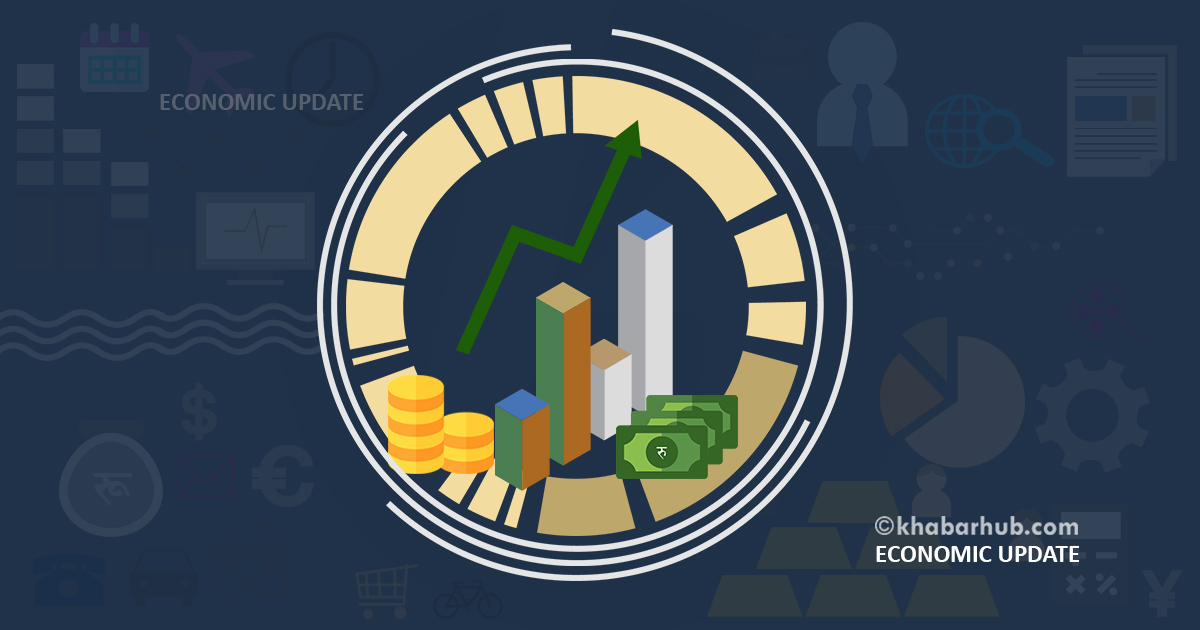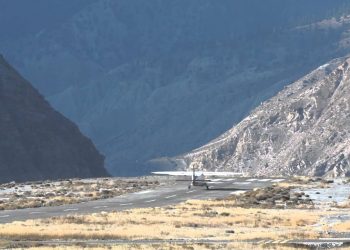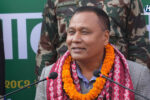KATHMANDU: Monthly Economic Digest offers a concise yet comprehensive overview of significant business happenings in Nepal, presented in easily digestible summaries.
In August 2024, Nepal’s economy displayed signs of cautious stabilization amid moderate inflation of 5.44%.
Trade performance showed some improvement with less severe declines in imports and exports compared to previous years, suggesting a gradual stabilization in external trade. Remittance inflows grew by 16.5%, contributing positively to the balance of payments, which recorded a surplus of NPR 502.49 billion.
Foreign exchange reserves reached USD 15.27 billion, providing a solid buffer for import coverage and external stability.
Monetary aggregates saw robust growth with broad money and deposits increasing by 13.0%, though private sector credit growth was more modest at 5.8%.
The gold market experienced notable volatility, reflecting broader economic uncertainties. The Nepse index showed an overall positive trend with minor fluctuations, indicating investor confidence.
Significant infrastructure developments included the resumption of the Gautam Buddha International Cricket Stadium construction and a major expansion of Nepal’s electricity transmission network to 6,507 circuit kilometers.
Financial metrics indicate resilience, with significant growth in foreign exchange reserves and monetary aggregates. Infrastructure and development projects advance, contributing to regional growth and connectivity.
Government revenue in the first month of FY 2024/25 notably exceeded expenditures, reflecting strong fiscal performance.
Social security allowances have increased substantially, now accounting for a significant portion of the budget, posing fiscal challenges.
The World Bank’s $100 million grant will support local road network improvements, enhancing regional connectivity.
Additionally, Nepal plans to start electricity exports to Bangladesh, marking progress in regional energy collaboration.
Inflation Trends and Economic Stability
In the fiscal year 2023/24, Nepal recorded an average inflation rate of 5.44%. While this is slightly higher than previous years, it remains within the target ceiling set by economic policymakers.
This moderate rise reflects pressures on consumer prices, influenced by a combination of domestic supply chain issues and external economic factors such as global commodity price fluctuations.
The manageable inflation rate suggests that the monetary policy framework is effective in containing extreme price movements, but close monitoring is essential to prevent inflationary spirals, especially in light of potential external shocks and domestic supply constraints.
Trade Performance
Nepal’s trade balance showed mixed results with imports and exports both declining. Imports fell by 1.2%, and exports decreased by 3.0%, marking a significant improvement over the previous fiscal year when imports had dropped by 16.1% and exports by 21.4%.
This reduced contraction indicates some stabilization in trade flows, although the persistent decline in exports suggests ongoing challenges in achieving trade growth.
Factors such as global demand fluctuations, competitive pressures, and domestic production constraints could be influencing trade performance. Addressing these issues may be key to revitalizing export growth and improving trade balance in the future.
Nepal imports smartphones worth over Rs 3.46 billion in Shrawan
The import of digital gadgets, particularly smartphones, has surged in Nepal, with the country importing smartphones worth over Rs 3.46 billion in the last month alone (Shrawan).
According to the Department of Customs, the first month of the current fiscal year also saw a significant trade deficit of Rs 116.15 billion. During this period, Nepal conducted trade worth Rs 140.60 billion.
Meanwhile, Nepal’s exports amounted to Rs 12.22 billion, while imports reached Rs 128.37 billion in the first month of the fiscal year.
However, compared to the same period last fiscal year, imports declined by 0.67 percent, and exports dropped by 9.63 percent.
Remittance Inflows and Financial Health
Remittance inflows, a critical component of Nepal’s economy, increased by 16.5% to NPR 1,445.32 billion.
Although this growth rate is slower than the 23.2% rise observed in the previous year, it remains a vital economic lifeline for many households.
The government’s revenue collection for the first month of FY 2024/25 amounted to NPR 96.95 billion, doubling the expenditure of NPR 40.20 billion.
The U.S. dollar equivalent of remittances grew by 14.5% to USD 10.86 billion, showing a slight acceleration from the previous year’s 13.9% increase.
The robust remittance growth significantly contributed to the balance of payments, which improved to a surplus of NPR 502.49 billion from NPR 285.82 billion.
This surplus underscores a more favorable external account balance and strengthens Nepal’s financial position.
Foreign Exchange Reserves and Economic Buffer
Nepal’s gross foreign exchange reserves reached USD 15.27 billion, providing a substantial buffer to cover imports for approximately 13 months.
This level of reserves indicates a strong external position and the ability to withstand economic shocks. The increase in reserves reflects positive net capital inflows and effective external sector management.
Maintaining high reserve levels is crucial for managing external debt obligations, stabilizing the currency, and supporting overall economic stability.
Monetary Aggregates and Credit Expansion
In terms of monetary aggregates, broad money (M2) and deposits increased by 13.0%, reflecting a healthy expansion of liquidity in the financial system. However, private sector credit growth was more modest at 5.8%.
This disparity suggests that while there is ample liquidity in the banking system, lending practices may be cautious. The relatively slow growth in credit could indicate a focus on maintaining financial stability and managing credit quality, which could impact overall economic expansion if it persists.
Gold Market Volatility
Gold prices in Nepal exhibited notable volatility throughout August. Prices began at NPR 148,800, experienced a mid-week spike to NPR 150,800, and then declined to NPR 149,600 by the end of the week.
This volatility reflects broader market sensitivities and could be influenced by global economic conditions, geopolitical developments, or domestic market dynamics.
Investors and consumers may need to navigate these fluctuations carefully, considering their potential impact on investment strategies and purchasing power.
Stock Market Trends
The Nepse index demonstrated a generally positive trend with some fluctuations. It surged by 3.41% at the beginning of the week, continued to rise to a peak with a 1.45% gain by Thursday, despite a minor dip on Tuesday.
This overall upward trajectory suggests investor confidence and favorable market conditions.
The fluctuations in the index highlight the dynamic nature of equity markets, driven by both domestic economic developments and broader market sentiments.
Infrastructure and Development Projects
Significant progress was made in infrastructure development. The Gautam Buddha International Cricket Stadium in Bharatpur resumed construction, with a projected completion date of January 2027.
This project is a key part of regional development and sports infrastructure. Additionally, Nepal’s electricity transmission network expanded to 6,507 circuit kilometers, more than double the extent from eight years ago.
This expansion, despite facing challenges like local resistance and land acquisition issues, is crucial for improving the country’s energy infrastructure and supporting economic growth.
The extension of the national grid to remote areas like Gosainkunda represents a substantial improvement in regional connectivity and access to electricity.
Government Revenue and Expenditure
The government’s revenue collection for the first month of FY 2024/25 amounted to NPR 96.95 billion, doubling the expenditure of NPR 40.20 billion.
This strong revenue performance, which represents 6.59% of the annual target, highlights effective fiscal management and a robust start to the fiscal year.
The expenditure of NPR 40.20 billion includes recurrent costs, capital expenses, and debt servicing, with recurrent costs accounting for a significant portion.
August 2024 presents a mixed economic landscape for Nepal. Inflation remains under control, trade shows signs of stabilization, and remittances continue to bolster the balance of payments.
This fiscal performance indicates a positive balance and suggests that the government is on track to meet its financial targets.
Social Security and Fiscal Pressure
Social security allowances have increased nearly 11-fold over the past decade, now accounting for 8.16% of the total budget.
This dramatic rise reflects both the success of social welfare programs and the growing fiscal pressure they exert.
Allocations for social security in FY 2024/25 have reached NPR 298.57 billion, indicating a significant commitment to social welfare despite increasing financial strain.
The expansion of these programs highlights the need for careful management to balance social objectives with fiscal sustainability.
Development Funding and Regional Connectivity
The World Bank’s $100 million grant for the Provincial and Local Road Network Improvement Program will support the development and upgrade of 3,000 kilometers of roads in the Sudurpaschim, Karnali, and Madhesh provinces.
This project aims to enhance connectivity, efficiency, and safety in these regions, benefiting approximately one million residents. The funding will also bolster local government capacity in road and bridge management, contributing to broader development goals.
Electricity Exports
Nepal’s plans to begin exporting electricity to Bangladesh later this year represent a significant step in expanding its role in the regional energy market.
The export plan, contingent on finalizing trade agreements, reflects substantial investments in Nepal’s energy sector.
The potential for electricity exports highlights Nepal’s growing energy resources and its strategic importance in regional energy dynamics.
Conclusion
August 2024 presents a mixed economic landscape for Nepal. Inflation remains under control, trade shows signs of stabilization, and remittances continue to bolster the balance of payments.
Financial metrics indicate resilience, with significant growth in foreign exchange reserves and monetary aggregates. Infrastructure and development projects advance, contributing to regional growth and connectivity.
However, challenges such as slower credit growth, social security costs, and market volatility require ongoing attention.
As Nepal navigates these dynamics, sustained policy vigilance and strategic management will be crucial for maintaining economic stability and growth.
(Prepared by Srija Khanal)









Comment